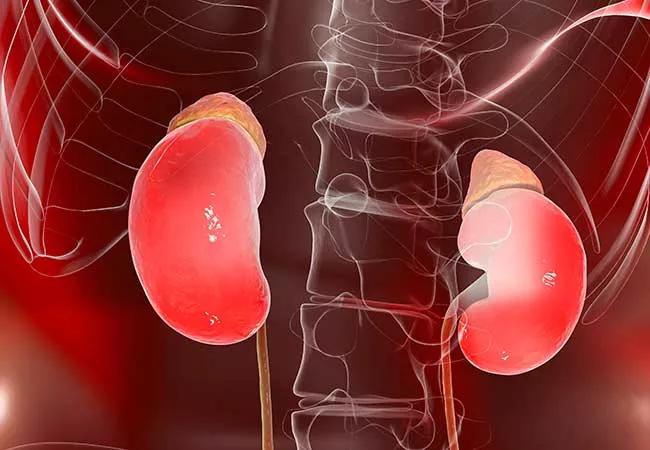Analysis provides evidence to guide treatment of uncommon RCC subtypes

Over the past decade, major progress has been made in treating metastatic clear cell renal cell carcinoma (ccRCC), with immunotherapy now a standard of care in ccRCC. However, progress has lagged behind for metastatic non-clear cell renal cell carcinoma (nccRCC), which affects only a fraction of all RCC patients, and is not well understood.
Advertisement
Cleveland Clinic is a non-profit academic medical center. Advertising on our site helps support our mission. We do not endorse non-Cleveland Clinic products or services. Policy
Treatment for metastatic nccRCC has been based mainly on extrapolation of data from metastatic ccRCC treatment with limited prospective data to guide its use. The data that is available has shown that nccRCC is often resistant to systemic treatments used for ccRCC. In studies evaluating the previous standard of care — vascular endothelial growth factor (VEGFR) tyrosine kinase inhibitors (TKI) and mammalian target of rapamycin (mTOR) inhibitors — for advanced nccRCC, sunitinib and everolimus showed modest clinical activity with lower response rates than ccRCC.
In 2018, the immunotherapy regimen ipilimumab/nivolumab (Ipi/Nivo) was approved as a firstline treatment for IMDC intermediate and poor risk metastatic ccRCC patients but was not tested in nccRCC patients. Nivolumab monotherapy, however, has been shown to be a safe and effective treatment for nccRCC in a multicenter retrospective analysis of 41 patients, which included patients from Cleveland Clinic.
To learn about the clinical activity of Ipi/Nivo in metastatic nccRCC patients, Cleveland Clinic Cancer Center and the University of Texas Southwestern Medical Center conducted a retrospective analysis, which was presented at the American Society of Clinical Oncology (ASCO) Genitourinary Cancers Symposium earlier this year. “Since Ipi/Nivo was approved last year for clear cell RCC, many clinicians are using it for non-clear cell RCC patients as well. Our aim was to better characterize our experience with this regimen and provide information about clinical activity,” says Moshe Ornstein, MD, a medical oncologist at Cleveland Clinic.
Advertisement
The 18 patients included in the study cohort had non-clear cell histologies including: papillary (6), adenocarcinoma of renal origin not otherwise specified (2), unclassified (3), chromophobe (5), translocation (1) and medullary (1). Seven patients had ECOG PS 0, nine ECOG PS 1 and 2 ECOG PS 2. The median age was 60; 14 patients were male, and four female.
Ipi/Nivo was administered according to the protocols of CHECKMATE 214, the metastatic ccRCC trial that led to the treatment’s approval. Most patients received Ipi/Nivo as firstline treatment and the remaining received it following other systemic therapy. Patients had computed tomography scans at baseline and every 12 weeks to assess disease response according to RECIST 1.1 criteria.
Of the 18 patients, four patients showed a partial response (PR), and four had stable disease. In total, this represents a 42% disease control rate. Eleven patients experienced immune-related adverse events (irAEs) which included: colitis (4), hepatotoxicity (3), hypophysitis (1), fatigue (1), rash (1) and encephalitis (1). All were resolved except the encephalitis, which caused the patient’s death. Four other patients died from the disease.
“Overall, this retrospective analysis demonstrated promising results and expected toxicity for ipilimumab and nivolumab in patients with for non-clear cell RCC,” says Dr. Ornstein.
Advertisement
Advertisement

Addressing rare disease and challenging treatment course in an active young patient

Large retrospective study suggests DOACs are safe, effective alternative to low-molecular-weight heparin in complex patient population

Care paths and research initiatives aim to answer unmet clinical needs

Study shows high rate of hematologic responses, low rate of disease progression

Bispecific antibody bridging therapy deepens durability of BCMA CAR T-cell therapy without overlapping toxicities in patients with relapsed/refractory multiple myeloma

Phase 2 study brings pivotal advances in treatment efficacy and safety for the most challenging-to-treat population

Patient with quadruple refractory multiple myeloma achieves complete response with cell therapy

Distinct baseline immune profiles can predict response and resistance to different types of CAR-T cells.